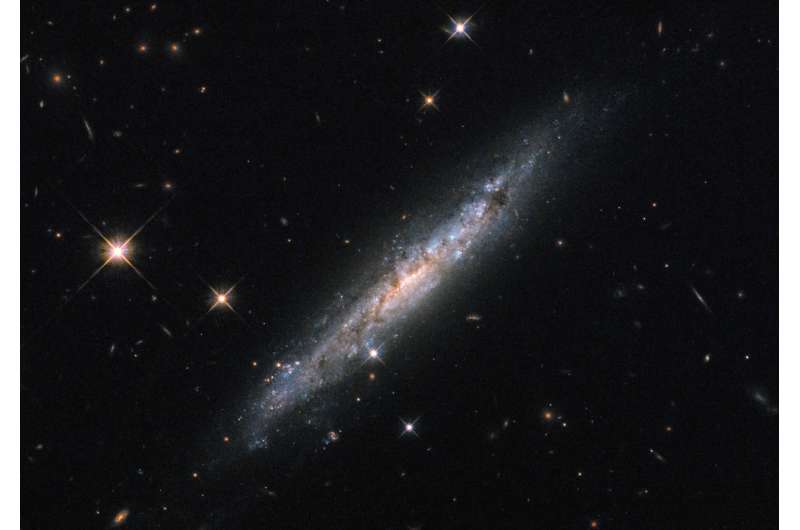Hubble frames an explosive galaxy

Don't be fooled! The cosmic swirl of stars in this NASA/ESA Hubble Space Telescope image may seem tranquil and unassuming, but this spiral galaxy, known as ESO 580-49, actually displays some explosive tendencies.
In October of 2011, a cataclysmic burst of high-energy gamma-ray radiation—known as a gamma-ray burst, or GRB—was detected coming from the region of sky containing ESO 580-49. Astronomers believe that the galaxy was the host of the GRB, given that the chance of a coincidental alignment between the two is roughly 1 in 10 million. At a distance of around 185 million light-years from Earth, it was the second-closest gamma-ray burst (GRB) ever detected.
Gamma-ray bursts are among the brightest events in the cosmos, occasionally outshining the combined gamma-ray output of the entire observable Universe for a few seconds. The exact cause of the GRB that probably occurred within this galaxy, catalogued as GRB 111005A, remains a mystery. Several events are known to lead to GRBs, but none of these explanations appear to fit the bill in this case. Astronomers have therefore suggested that ESO 580-49 hosted a new type of GRB explosion—one that has not yet been characterized.
Provided by NASA




















